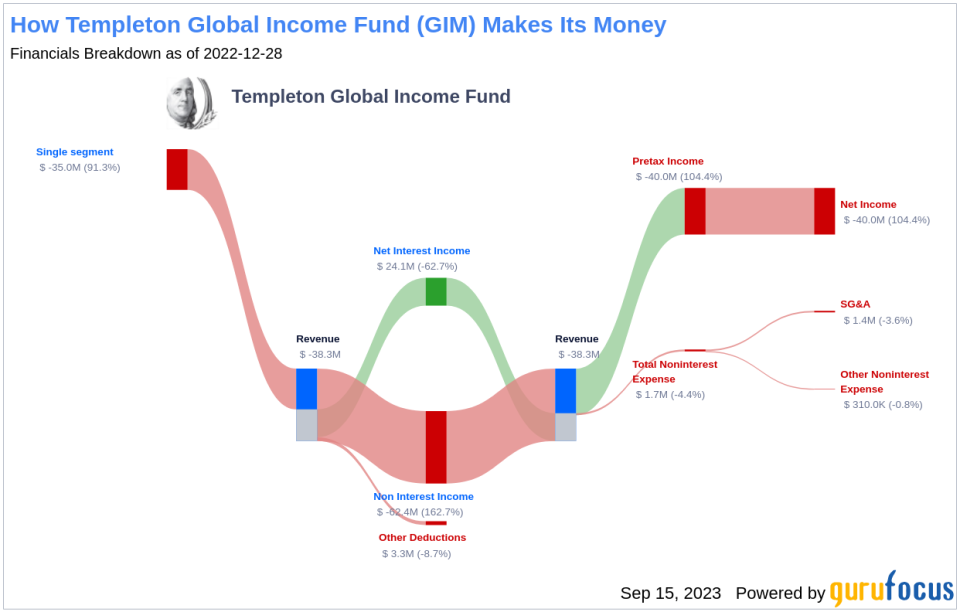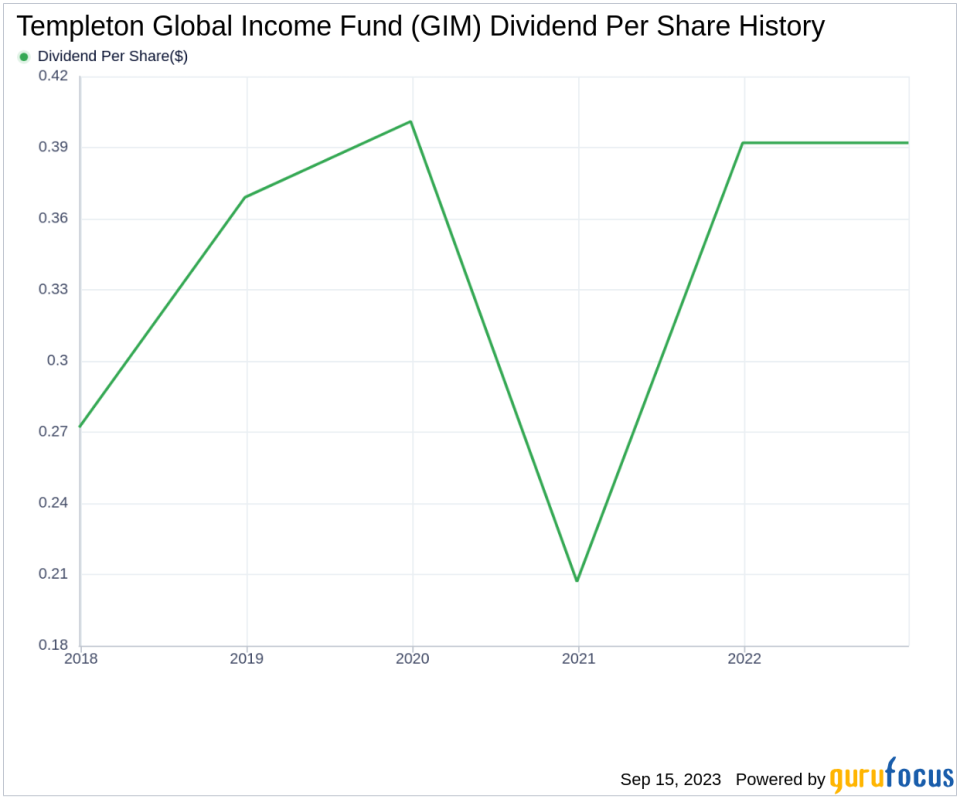Templeton Global Income Fund: A Deep Dive into Dividend Sustainability
An Analysis of Dividend Performance, Growth, and Payout Ratio
Templeton Global Income Fund (NYSE:GIM) recently announced a dividend of $0.03 per share, payable on 2023-09-29, with the ex-dividend date set for 2023-09-15. As investors look forward to this upcoming payment, the spotlight also shines on the company's dividend history, yield, and growth rates. Using the data from GuruFocus, let's deep dive into Templeton Global Income Fund's dividend performance and assess its sustainability.
What Does Templeton Global Income Fund Do?
Warning! GuruFocus has detected 1 Warning Sign with PFLT. Click here to check it out.
This Powerful Chart Made Peter Lynch 29% A Year For 13 Years
How to calculate the intrinsic value of a stock?
Templeton Global Income Fund is a closed-end fund. It seeks high current income, with a secondary goal of capital appreciation. Under normal market conditions, the Fund invests at least over 80% of its net assets in income-producing securities, including debt securities of the United States and foreign issuers, including emerging markets.

A Glimpse at Templeton Global Income Fund's Dividend History
Templeton Global Income Fund has maintained a consistent dividend payment record since 1988. Dividends are currently distributed on a monthly basis. Below is a chart showing annual Dividends Per Share for tracking historical trends.

Breaking Down Templeton Global Income Fund's Dividend Yield and Growth
As of today, Templeton Global Income Fund currently has a 12-month trailing dividend yield of 9.11% and a 12-month forward dividend yield of 9.06%. This suggests an expectation of decreased dividend payments over the next 12 months.
Over the past three years, Templeton Global Income Fund's annual dividend growth rate was -0.80%. Extended to a five-year horizon, this rate increased to 3.90% per year. Based on Templeton Global Income Fund's dividend yield and five-year growth rate, the 5-year yield on cost of Templeton Global Income Fund stock as of today is approximately 11.03%.

The Sustainability Question: Payout Ratio and Profitability
To assess the sustainability of the dividend, one needs to evaluate the company's payout ratio. The dividend payout ratio provides insights into the portion of earnings the company distributes as dividends. A lower ratio suggests that the company retains a significant part of its earnings, thereby ensuring the availability of funds for future growth and unexpected downturns. As of 2023-06-30, Templeton Global Income Fund's dividend payout ratio is 2.04. This may suggest that the company's dividend may not be sustainable.
Templeton Global Income Fund's profitability rank, offers an understanding of the company's earnings prowess relative to its peers. GuruFocus ranks Templeton Global Income Fund's profitability 2 out of 10 as of 2023-06-30, suggesting the dividend may not be sustainable. The company has reported net profit in 3 years out of the past 10 years.
Growth Metrics: The Future Outlook
To ensure the sustainability of dividends, a company must have robust growth metrics. Templeton Global Income Fund's growth rank of 2 out of 10 suggests that the company has poor growth prospects and thus, the dividend may not be sustainable.
Concluding Thoughts
Investors must consider several factors when evaluating the sustainability of a company's dividend. While Templeton Global Income Fund has a long history of consistent dividend payments, its current payout ratio, profitability rank, and growth metrics suggest potential challenges in maintaining its dividend in the future. As always, thorough research and careful consideration are key to making informed investment decisions.
GuruFocus Premium users can screen for high-dividend yield stocks using the High Dividend Yield Screener.
This article first appeared on GuruFocus.
